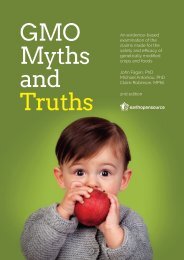1923%20Memoir%20on%20Maps%20of%20Chinese%20Turkistan%20by%20Stein%20s
1923%20Memoir%20on%20Maps%20of%20Chinese%20Turkistan%20by%20Stein%20s
1923%20Memoir%20on%20Maps%20of%20Chinese%20Turkistan%20by%20Stein%20s
Create successful ePaper yourself
Turn your PDF publications into a flip-book with our unique Google optimized e-Paper software.
TlIE REGIONS SURVEYISD [Chap. II<br />
I have also ssplained tlle c+nilses wliicl~ rerider such ' termi~~al oases'<br />
Kelllnill*of ,>BSBS r'ball'lolled liable to c11:lnges in position and extent during different<br />
I~eriodr lo Evidenee of' tllvse changes survives in the remains of those<br />
numerous ancient sett.lenients abandoned to the tlesert n,llicll my exploratio~is have ensbled<br />
me to trace. The fact of the most i~nportant among them being found far to the north of<br />
the present. line of 'terminal oases ' ftlr~~ishes definite roof of the progress of desiccation in<br />
this regioil n~itlrin historic.al t,imes. " Tllrrs the (letailed surveys attending those csl)lorat.ions<br />
may claini special interest in ronnection with a 111nc1-1is1ssed g$.rogral)hiral tloeriion.<br />
Stc~iox I\'.-1'II 12 TliR&lIN,\L 1)ISl'RESSION 0)' LOP AN1) 1'1-1 15<br />
TlJH 1C.iN LI.ISIS.<br />
The last of the regions compriseil \vitl~in the Tfirim basin is the Ierminal tlel~ression<br />
of Lop. The smallest in extent and particularly well defincd, it enlribits<br />
Extent depressiou. Of Lop<br />
a ~parirty of interesting Reograpl~ical features. It may be alqxopriately<br />
described as containinc the terminal course of tlle T;irim \\.it11 its fringe<br />
of Iagoous, the marshes in \vhicli its \vat.ers are final!?. lost,, and tlre great salt-eurrustetl bed<br />
of the dried-up Lop sea beyond them, together with t,lie wastes of gravel, drift-sand and<br />
wind-eroded clay which surround it. 111 accordance with the tratlitional application of the<br />
name Lop, itself of very ancient origin, ' we must include in this region also tl~e dune-covered<br />
area to t,he east of the Tcrirn's final course, already referred to as an outlier of the Taklamakin,<br />
as \veil as the area, mostly scrt~bl?- dese~t or gravel 'Sai', wllich extends southwards<br />
of the last sections of the Charcllan river and the Tirim to the foot of the mot~ntains.<br />
Here the streams of Vas11-sl~ahri, Charkhlik and RIirin llave in recent years rendered<br />
it possible for a few slnall settlenlents to resume cult,i~ation near ancient<br />
Popnlation of Lop<br />
area. sites abandoned for centuries. "part from the people in these tiny<br />
oases and the survivors of the scanty nomadic population of Loldiks<br />
('Lop people') fishing and hunting along the terminal Tarim, the whole region is now n.11olly<br />
uninhabited. The same applies also to tlie surrounding areas : in the west the Taklamakan ;<br />
in the north the barren hills of the Kuruk-t:igh ; in the east tlie terminal basin of the Su-loho,<br />
and in the south the arid ranges of the Altin-tigli, an eastern extension of the K'un-lun.<br />
In spite of its desolate character, considerable interest, historical and geograpllical,<br />
attaches to the Lop region. This explains the spec~al efforts devoted to<br />
Prehistoric sea bed. its survey both on my second and third expeditions, notwithstanding<br />
the great physical di5culties besetting topograld~ical work in a region<br />
which for the most part is devoid of drinkable water. 111 the great salt-encrllstetl I~etl, proved<br />
by our surveys to extend for fully 170 miles from soutli-west to north-east with a maximum<br />
width of some 60 miles, we have a visible remnant of that prehistoric aalt sea \vhich was fed<br />
by the drainage of the Tirirn basin during periods when the climate of Central Asia was<br />
moister.<br />
A variety of observations justify tlie assumption that this dried-up terminal basin,<br />
still showing salt bogs in places, even now periodically receives water<br />
Marshesof Lop-nirr. at its south-west end, either I I inundation ~ or percolation, from the<br />
adjoining Kara-koshun marshes of the Tirim. "l'he fact that, these<br />
marshes of 'Lop-rCr'-to use the Mongol designation which from modern Chinese maps and<br />
lo Cf. Anciort Khotna, i. pp. $15 sq., 285 sq., 385<br />
sq., 419 sq.; Seri,rdia, i. pp. 202 sqq.<br />
the local name Lop, cf. Srriadia, i. pp. 318 sqq. In<br />
its present [o~m it is tirat 1.ecordec1 toy Narco Polo,<br />
'I See Sheet No. 14. G. 1,2 for the sites of Uae.<br />
din-oilik, Uzon-tati, etc.; Hos. 18. B. 4; 19. U. 1 for<br />
thr Kiya site.<br />
' Regarding the history and early application of<br />
see Yule, The Book of Ser.,V






